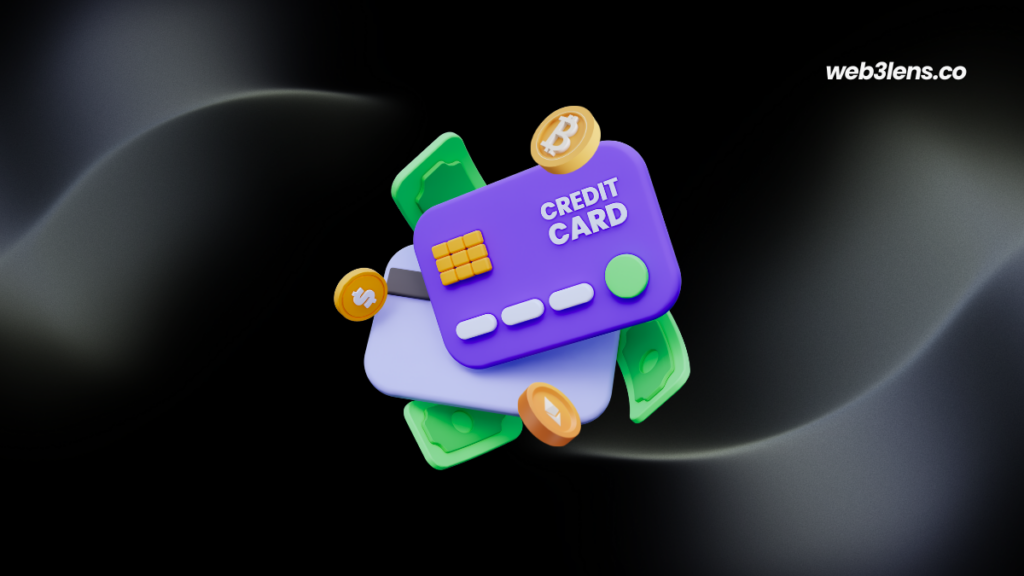
Introduction
In the past few years, crypto airdrops have gained significant traction as some users have made crazy profits without any initial investment. They are more and more popular due to their ability to engage communities and boost visibility for new projects. This beginner’s guide will showcase the importance and process of crypto airdrops. We will focus on what they are and how they operate. We aim to arm you with the knowledge to navigate this attractive aspect of crypto and web3. Whether you’re an airdrop master or a newcomer to this lucrative game, we’re sure you’ll find value in this article.
👉 Want to learn more? Head over to our guides 📚
What are crypto airdrops ?
Crypto airdrops are a basic but smart method used by crypto projects to distribute tokens to many wallet addresses. Think of it as dropping free samples of a new product to potential customers, but 100% on-chain. These tokens might be given for free, but most of the time the user has to go through a specific list of tasks to become eligible.
When looking closely at it, a crypto airdrop is a free distribution of tokens or coins to a large number of wallet addresses. Crypto airdrops are often done by blockchains as a way of bootstrapping their campaigns. Participants in airdrops are picked based on many criteria, such as holding a specific crypto or completing particular tasks within the ecosystem.
The concept of an airdrop is not entirely new, but its application in crypto is recent. The term “airdrop” comes from the practice of distributing goods via aircraft, specifically during wars or humanitarian crises. In crypto, however, airdrops became popular around 2017 during the ICO (Initial Coin Offering) boom. Projects sought creative ways to gain visibility and acquire users without directly spending money on traditional marketing.
👉 Check out our article to understand the differences between Initial Coin Offering and Consumer Token Offering 🪙
6 key characteristics to distinguish crypto airdrops from other token distribution methods:
1. Free distribution: tokens are distributed for free. Well, not really, since users are actively engaging with the protocols, spending fees and investing on different products.
2. Eligibility criteria: To qualify for an airdrop, participants need to meet specific criteria, which can be hidden to make it even more challenging.
3. Promotional tool: a crypto airdrop plays a major role in the marketing strategy of a project, it is one of the strongest tools they can use.
4. Decentralization: By distributing tokens widely, projects can achieve a form of decentralized ownership. This is also why the community loves airdrop as everybody owns a small share of the project.
5. User engagement: Airdrops require participants to engage with the project via social media, forums, or other platforms, increasing the project’s visibility and community interaction.
6. Security considerations: Authentic airdrops will never ask participants for private keys or sensitive information. It’s essential to remain vigilant against scams.
Now you’re starting to understand that crypto airdrops are more than just free tokens. They are strategic tools employed by new and existing projects to maximize reach and community engagement. The end goal is to make sure that as many people as possible become token holders, incentivizing them to engage with and support the ecosystem.

Why do companies do crypto airdrops?
First, airdrops are part of an innovative marketing strategy. Instead of investing tons of money on traditional ads, companies opt for this creative method. Distributing free tokens creates buzz, gathers attention, and generates organic word-of-mouth promotion. The allure of “free” is a timeless tactic, capturing eyeballs and piquing curiosity effortlessly.
Crypto airdrops are necessary for a new project to collect its first users. By giving away tokens, companies attract large amounts of airdrop farmers, who then become potential users or investors. It’s a win-win relationship: they get free crypto, and companies get the attention they crave. These people are likely to stay engaged, following the project’s developments, contributing to discussions, and even advocating for its success.
Crypto airdrops allow these startups to disperse their supply by a lot. When tokens are widely distributed, the project attains a level of decentralization and community involvement that is mandatory for its growth and sustainability. Increased circulation also promotes liquidity, making it easier for people to buy, sell, or trade the tokens on various exchanges. This improves the ecosystem’s overall activity and health.
👉 How to Qualify for the Owlto Finance Airdrop? 🪂
Companies have leveraged airdrops to great effect:
1. OmiseGO: One of the earliest pioneers, it distributed tokens to Ethereum holders, capturing a lot of attention.
2. Stellar Lumens (XLM): Known for multiple large-scale airdrops, including collaborations with Blockchain.com to distribute millions of tokens.
3. Decred: This project used airdrops to distribute its initial supply, making sure there was a fair and widespread token allocation.
Companies are utilizing airdrops to increase their visibility, user base, and achieve a superb token distribution, all while activating community engagement and excitement.
Types of crypto airdrops
Standard crypto airdrop
This is the most classic type. The company will send the tokens to all the wallet addresses linked to the airdrop. It is a simple giveaway. The project team selects the users, who usually only need to have an existing wallet address.
Key examples:
– Byteball: Had a standard airdrop by distributing tokens to Bitcoin holders during a specific snapshot date.
– AuroraDAO: Airdropped AURA tokens to users holding ETH during a predetermined snapshot period.
Bounty crypto airdrop
Bounty airdrops demand users to complete specific tasks to qualify. Tasks may include social media activities like tweeting, joining a Telegram group, writing blog posts, or creating video content.
Examples of bounty airdrop projects:
– Hydro: Involved participants in a series of tasks like following on Twitter and joining their Discord group to earn tokens.
– Status: Required users to promote their platform through social media sharing and content creation to get airdrops.
Holder crypto airdrop
Holder airdrops reward individuals who already own a specific amount of a particular cryptocurrency or token. The snapshot of the blockchain is taken at a specific time, and tokens are distributed proportionally to the holders of the specified asset.
Popular holder airdrops in the past:
– TRON (TRX): Had a holder airdrop, distributing BTT tokens to TRX holders.
– Neo (NEO): Frequently airdropped GAS tokens to NEO holders as part of its network’s incentive structure.
Exclusive crypto airdrop
Exclusive airdrops target a smaller audience and often have strict eligibility criteria. Requirements might include being part of a VIP list, a long-term community member, or having early access to a project.
Benefits for early adopters or community members:
– UniSwap (UNI): Airdropped UNI tokens to early users of their platform, rewarding those who had interacted with the protocol before a specified date.
– 1inch Exchange (1INCH): Offered exclusive airdrops to users who had engaged with certain decentralized finance (DeFi) platforms, rewarding loyal and early adopters.
Raffle Airdrop
Raffle airdrops run like a lottery. Participants enter the airdrop by holding a token or completing specific tasks, and winners are randomly selected to receive the tokens.
How to participate in a raffle airdrop:
– Meet the entry requirements: This could be something like holding a particular token or performing tasks like following on social media.
– Register with the project: Signing up on the project’s platform or through designated forms might be necessary.
– Wait for the draw: Winners are announced publicly, and tokens are distributed accordingly.
Examples:
– ethtown: Held a raffle airdrop where token holders could win additional tokens based on chance.
– Polkastarter: Periodically conducts raffle airdrops where participants get a chance to win tokens by fulfilling specific criteria.
How do crypto airdrops work?
When a project decides to have an airdrop, it usually sets specific criteria or conditions. These can range from holding a specific cryptocurrency, fulfilling certain tasks, or even just having a wallet address. Once the criteria are met, the tokens are distributed directly to the qualifying participants’ wallets.
Projects use snapshots — a method of recording the state of the blockchain at a particular point in time — to identify which wallets meet the eligibility criteria. After the snapshot date, the tokens are then sent out to the qualifying addresses. The entire process is automated through smart contracts, ensuring transparency and security.

How to participate in airdrops?
Participating in a crypto airdrop can be quite straightforward, but it requires some steps to ensure eligibility and receive the tokens:
Wallet requirements:
First and foremost, you’ll need a compatible cryptocurrency wallet. The majority of airdrops occur on popular blockchains like Ethereum, Binance Smart Chain, or Solana. Therefore, having a compatible wallet that supports these blockchains is crucial. Wallets like MetaMask, Trust Wallet, or hardware wallets like Ledger are commonly used.
👉 A Complete Guide: Bedrock’s Bitcoin Liquid Staking – Maximizing Your BTC Yield 🧡
Steps to claim an airdrop:
1. Set up a wallet: Ensure you have a secure and compatible wallet. Make sure to safeguard your private keys and recovery phrases.
2. Fulfill eligibility criteria: Depending on the type of airdrop, you may need to hold specific tokens, perform social engagement tasks, or simply sign up on the project’s platform.
3. Stay updated: Follow the project’s official channels, such as their Twitter account, Telegram group, or newsletter, to stay informed about the airdrop details.
4. Claim your tokens: After the snapshot or completion of tasks, you may need to manually claim the tokens via a smart contract interaction or they might be automatically deposited into your wallet.
Common platforms and communities tracking airdrops:
1. Airdrop Alert: A comprehensive directory of ongoing and upcoming airdrops.
2. AirdropBob: Offers detailed information and step-by-step guides on various airdrops.
3. CoinMarketCap: Their “Earn” section sometimes lists airdrops and educational rewards.
4. Crypto Airdrops: A community-driven platform compiling lists of legitimate airdrops.
What to do after receiving a crypto airdrop?
The moment you receive your airdropped tokens, you might be overwhelmed with the possibilities. Here’s a guide on what you can do next:
Managing newly acquired tokens:
Keep track of your new assets by adding them to your wallet interface. Tools like CoinGecko or CoinMarketCap can help you track the value and performance of your tokens. If the tokens don’t automatically appear in your wallet, you may need to manually add the token contract address.
Potential actions: trading, holding, using:
1. Trading: If the tokens are listed on exchanges, you can trade them for other cryptocurrencies. Be cautious of the market liquidity and pricing before making any trades.
2. Holding: Many choose to hold their airdropped tokens, hoping they will appreciate in value over time. Holding can be advantageous if you believe in the long-term potential of the project.
3. Using: Some tokens have utility within their respective platforms. Perhaps they can be staked for rewards, used for governance, or even spent on services within the project’s ecosystem.

Pros and Cons of Crypto Airdrops
Pros
Accessibility and inclusiveness:
Crypto airdrops allow anyone with a compatible wallet to participate, democratizing the distribution process and making it accessible to a diverse range of users.
Potential for profit:
Receiving free tokens presents an opportunity for profit if the value of the tokens appreciates. Many early recipients of successful airdrops have seen significant returns.
Community building:
Airdrops foster a sense of community by rewarding early adopters and active participants. This can lead to a loyal, engaged user base that supports the project’s growth and success.
Cons
Associated risks:
Airdrops aren’t without risks. Scams and fake airdrops can lure users into traps, potentially compromising their wallets or personal information.
Market volatility:
The tokens received can be subject to extreme market volatility. Prices can plummet as quickly as they rise, and the tokens might even become worthless, making the potential profits highly unpredictable.
Safety Measures for Crypto Airdrops
How to Avoid Airdrop Scams?
Common red flags of airdrop scams:
– Requests for private keys: Genuine airdrops will never ask for your private keys.
– Unsolicited messages: Be wary of unexpected DMs or emails claiming to offer airdrops.
– Too good to be true: If an airdrop promises exceedingly large rewards, it’s likely a scam.
– Poor grammar and design: Scammers often neglect professionalism in their communication and website design.
Safety tips and best practices:
– Use reputable wallets: Stick to well-known wallets like MetaMask or Rabby.
– Verify official channels: Always double-check announcements from official project channels.
– Enable security features: Use two-factor authentication (2FA) and keep your recovery phrases secure.
– Cross-reference information: Validate details through multiple trusted sources before participating.

Trusted sources for airdrop information:
– CoinMarketCap and CoinGecko: Both platforms often list legitimate airdrops.
– Airdrop Alert and AirdropBob: Known for curating genuine airdrop opportunities.
– Official project websites and social media: Always refer to the official channels of projects for announcements.
Crypto Airdrops and Taxes
Taxable events related to airdrops
Receiving airdropped tokens can be considered a taxable event in many jurisdictions. When tokens are airdropped into your wallet, they may be recognized as income, and you might owe taxes based on their fair market value at the time of receipt. Additionally, subsequent selling or trading of these tokens can trigger capital gains tax.
Reporting requirements
Accurately reporting airdrop income is crucial to avoid tax issues. You should document the fair market value of the tokens when received, as well as any subsequent transactions. Keeping meticulous records will help ensure compliance when filing your taxes. Many tax agencies provide guidelines on how to report such income, so always consult local regulations.
Regional differences in tax treatment
Tax laws vary widely by country and even by region within countries. For example, in the United States, the IRS considers airdropped tokens as taxable income upon receipt. In contrast, some countries may have more favorable tax treatments or exemptions for crypto assets. Always consult a tax professional familiar with cryptocurrency regulations in your jurisdiction to navigate this complex landscape.
Frequently asked questions
Addressing common questions about participating in airdrops
What is an airdrop and how do I claim it?
an airdrop is the free distribution of cryptocurrency tokens to users’ wallets. To claim an airdrop, you usually need to meet specific criteria like holding a certain token or completing tasks.
Am I eligible for an airdrop?
Eligibility depends on the airdrop’s requirements, which can range from holding certain tokens to engaging with the project on social media. always check the specific conditions set by the project.
Are airdrops legal?
Airdrops are generally legal, but regulations vary by country. It’s essential to understand the legal landscape in your jurisdiction and consult a legal professional if unsure.
How do I avoid airdrop scams?
Common red flags of airdrop scams include requests for private keys, unsolicited messages, and offers that seem too good to be true. Stick to trusted sources and follow security best practices.
Conclusion
Summary of key points discussed
We’ve delved into what crypto airdrops are, why companies use them, the different types of airdrops, and how to participate safely. We’ve also covered the tax implications and tackled common FAQ topics to clear up any lingering doubts.
Check out this 6min recap video about crypto airdrops:
Encouragement to participate safely and informed
participating in airdrops can be rewarding, but it’s crucial to stay informed and cautious. always verify information from trusted sources and follow best practices to safeguard your assets.
Final thoughts on the future of crypto airdrops
Crypto airdrops continue to evolve, offering exciting opportunities for both projects and participants. As the crypto space grows, we can expect even more innovative ways to engage and reward community members. embracing these opportunities wisely will be key to maximizing their benefits.
📚 Similar content you might like:
👉 Bitrefill Gift Card Honest Review 2024 💙
👉 Holyheld review: the best non-custodial crypto card? 💳
👉 Berachain Airdrop guide : Earn $BERA crypto 🧸
👉 Solana Sonic Game Coin: Airdrop guide 🪂
📌 Never miss a new post! Follow us:
👉 Linkedin
👉 X (Twitter)
👉 Facebook
👉 This article is provided by Web3Lens, learn more about us here.



